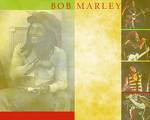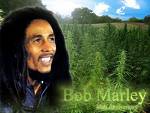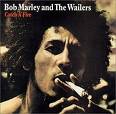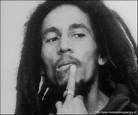The Wall, Senator Clinton and Bob Marley
by eileen fleming
On November 15, 2005, Senator Clinton stood on the Jerusalem side of The Wall and was quoted in Ha'aretz, expressing support for The Wall because it "is against terrorists" and "not against the Palestinian people."
Senator Clinton did NOT visit the Little Town of Bethlehem in Occupied Territory, to see what The Wall has done to the Bethlehem economy. But I have.
On New Years Eve Day 2005, I visited a family who had just rebuilt their home in Dasheish, one of three fifty-eight year old refugee camps in Bethlehem.
The Habib [not real name] family had rebuilt on the very same spot after the Israeli Defense Force/IDF blew their former home up without reason and without any compensation. The usual reason given for home demolitions is for the building of The Wall, but the Habib residence is deep within the Dasheish refugee camp, and The Wall is at least three miles away. Mr. Habib told me that in 2004, the IDF banged on his door and informed the family that their home would be demolished within fifteen minutes. The family all got safely out but their home was but a memory a few moments later.
"No one in our family had ever been in any trouble with the Israeli government before and no family member had ever been arrested. They picked us to be an example of the power and control that Israel has to deny basic and inalienable human rights," Mr. Habib told me without any bitterness.
What impresses me most every time I go to Palestine, is that every Palestinian I speak with all have the most forgiving spirits and unflappable patience. I thought of Senator Clinton's inaccurate and insensitive remarks about The Wall not being against the Palestinian people, and wondered what she would say about Palestinian homes being destroyed without any reason at all.
An Uncle down the stairs from the Habib's also had his home blown away on the same day. Relatives took them all in, for the poor in Palestine take care of the poor and don't look to the government to do what people of good will, will do automatically: care for the widow, the orphan, the ill and the prisoner.
When ever I need a taxi while in Bethlehem or Jerusalem, I call Sam. He can comfortably transport eight and has an excellent sound system. Sam is an Orthodox Christian in the Syrian Church and has a gorgeous wife and two beautiful kids. Sam has VIP papers which enable him to chauffeur the Patriarchs around town without as much hassle as a regular Palestinian would have to endure at the checkpoints.
Sam, his wife and I rode to the Ben Gurion Airport, three hours prior to my 1 AM flight home on January 5, 2005. We talked a little but mostly we listened to the music of Bob Marley. When we arrived at the checkpoint at the entrance of the airport, Sam rolled down his window and smiled at the young soldier and said, "Shalom" but it sounded more like "Salaam."
Sam's VIP pass meant nothing to the soldier and we are all ordered to disembark and pull out all the luggage. My passport was demanded without a smile and Sam was led into the interrogation room while his wife and I stay out in the cold trying to laugh at the absurdity of the situation. Another soldier examines and probes the van as he thoroughly looks for b-o-m-b-s. The paranoia I see in many Israeli's has got to be, some kind of holocaust hangover blinding them to the fact that the oppressed have now become the oppressors.
After Sam's van is thoroughly examined for b-o-m-b-s, I received my passport back marked with a red sticker upon it. Back in Sam's van his wife expertly removed the sticker and all the glue from my passport. The sticker brands one as having come through occupied territory. Sam informs me that my third degree would be airport securities territory and that was why the soldier never asked me any questions.
Sam smiled wryly as he told me, "This is what the Nazi's did to the Jews before the Holocaust when they made them wear the Star of David. They marked them as the enemy. Now anyone who knows Palestinians or visits occupied territory gets a sticker on their passport to label them as friends of the enemy."
Bob Marley and the Wailers erupt through the speakers: Get up, stand up Stand up for your rights Get up, stand up Stand up for your rights Get up, stand up Stand up for your rights Get up, stand up Don't give up the fight.
My luggage had been filled with Arabic nonviolent literature but Sam cautioned me to leave it all with him to avoid the extra hassle it could cause me during the routine questioning by airport security.
I left everything with him that I could get on the Internet but kept books, a CD and a DVD. Sam warns me on what I shouldn't say when I undergo my interrogation from the inquisitive employees at the Ben Gurion Airport.
While in Bethlehem I shared with many about my experience of having my computer confiscated by EL AL employees at JFK Airport, during my pre-flight checking in process. Every Palestinian told me "don't worry about it."
But every American I spoke with during my time in Israel and Palestine, freaked out when I told them about El Al confiscating my lap top for over an hour before I boarded the plane at JFK for my second trip to the Holy Land. Every American believed that they had downloaded my files, read my emails and perhaps even injected a Trojan into my soft ware. Those Americans had fallen into fear and paranoia, but Bob Marley and the Wailers is the way I choose to go:
Get up, stand up Stand up for your rights Get up, stand up Stand up for your rights Get up, stand up Stand up for your rights Get up, stand up Don't give up the fight.
I had no fear of any airport security and I was determined I would answer honestly every question and keep smiling. Every employee I encountered smiled back at me and nobody asked me any 'explosive' questions. While three different young women examined and swabbed every item and surface in all my luggage I experienced frisson: the chill in the thrill of the rush you experience in a moment of delight, excitement or fear.
A young lady examiner came upon the book from the Holy Land Trust conference I had attended December 27-30, 2005 entitled: Celebrating Nonviolent Resistance.
The young examiner never looked my way, but she read the cover and scanned all the pages most thoroughly.
I wondered if perhaps a few seeds of thought were left germinating in Tel Aviv that night, but I forgot all about that when I landed in JFK fourteen hours later.
I had crashed for five solid hours out of the eleven hour flight. I awoke to vivid images of The Wall that remain brutally fresh in my mind.
In my minds eye, I still see the concrete boa constrictor and electrified fence that divides, separates, humiliates, dominates, controls and denies inalienable human rights to every Palestinian.
When I landed at JFK Airport, Terminal Two to wait three hours for my connection home, all I could think about was The Wall and all the injustice's I had witnessed during my second of sixteen days in Israel and Palestine. [My first 16 days are documented in my first book, "Keep Hope Alive"]
In January 2005, every local, taxi driver and would be terrorist knew all the many ways around the concrete boa constrictor and electrified fence which had enormous gaps, holes, and other ways to get around checkpoints and avoid The Bethlehem Terminal which divides the sister city of and from Jerusalem.
The Israeli government and Senator Clinton both claim The Wall is all for Security. I know better.
The concrete boa constrictor and electrified fence is a master plan to divide, separate, humiliate, dominate, control and deny inalienable human rights to the indigenous people of the Holy Land.
In Palestine and the Unrecognized Villages there are olive trees that were rooted centuries ago, for olive trees can live for thousands of years, if they are not plowed down. Twenty five olive trees can support a typical family in Gaza, the West Bank and in the Unrecognized Villages, Where every little child knows the names of the ancient olive trees, And they always be, Names of mommys, sisters and favorite aunts and uncles, For the olive trees are a member of their families.
In 1948, 20% of the total population of the Holy Land were Christian. Today they number less than 1.3% and continue to shrink fast.
Palestinian Christian roots go back to the first century when Christ promised: "BLESSED ARE THE PEACEMAKERS: THEY ARE THE CHILDREN OF GOD." [Matthew 5:9]
At The Terminal in Bethlehem, upon the thirty foot high Wall, a hundred square foot sign from The Minister of Tourism hangs and proclaims in Orwellian logic: PEACE, PEACE, PEACE.
"Peace, peace, peace, they say, when there is no peace."-Jeremiah 6:14
For twelve days around Christmas 2005, I lived in the Little Town of Bethlehem in occupied territory. For twelve days I walked "through streets that were dead" [Bob Dylan] in the morning, noon and night and everywhere I did go, shops were closed, restaurants empty. A few locals would be around and tour buses would quickly come and go at the Church of The Nativity.
But stores remain closed and restaurants empty because tourists don't want to see, hear or know about occupied territory.
The Terminal is not The Way tourists in buses and taxis go; The Terminal is the way only Palestinians and the curious go, Who want to know what's really going down In the Holy Land: Which is in pieces.
Mr. Presidents, I plead, please tear down the concrete boa constrictor and electrified fence which has been deemed ILLEGAL by the International Court of Justice in the Hague.
Mr. Presidents, please imagine what a wonderful world it would be if you would plant olive trees and build playgrounds and construct bridges of community and global neighborhoods.
The Way to security is knowing ones neighbor, and ones neighbor is ones sister and brother, For everyone is a child of God.
To be blessed with Peace we must resist evil with good and God has already told us what is required: "Act justly, be merciful and walk humbly with your God."-Micah 6:8
"And the best you can do is forgive."-The Traveling Wilburys
About the Author
Eileen is a retired RN, activist, author, poet, reporter and editor of WAWA Blog:
http://www.wearewideawake.org She returns to the West Bank in November 2006 and will be reporting on WAWA.











